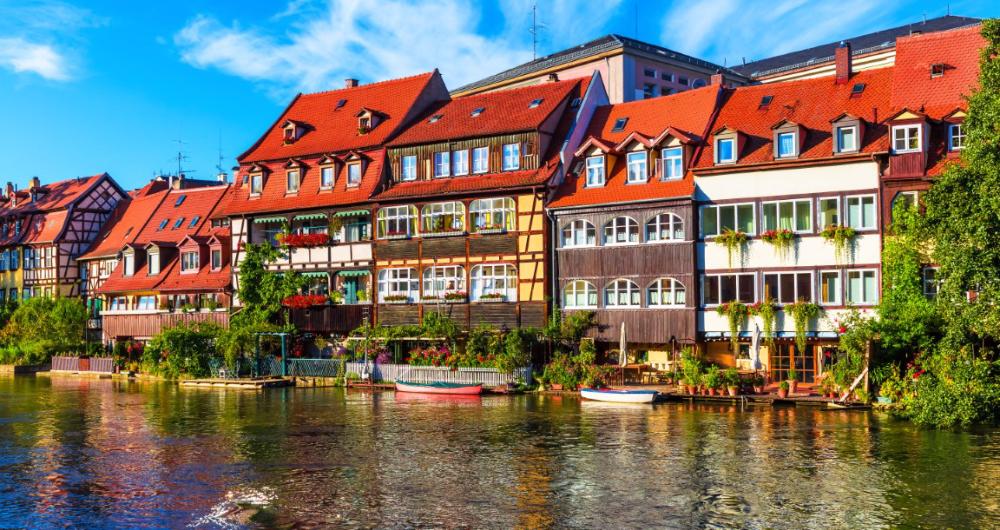In This Article
Dreaming of medieval streets, riverside views, and world-famous beer? Visit Bamberg! This UNESCO World Heritage city in Bavaria charms with its half-timbered houses, hilltop cathedral, historic breweries, and winding cobblestone alleys. Whether you're into architecture, food, or fairy-tale charm, Bamberg is a hidden gem worth exploring.
When I like to visit
The best time to visit Bamberg is in late spring through early fall (May to October). Enjoy mild weather, blooming gardens, beer gardens in full swing, and lively festivals. December is also magical for Christmas markets and holiday ambiance.
Tips for getting There
- If you are traveling by car: Bamberg is located off the A70 and A73 motorways, about 1 hour north of Nuremberg and 2.5 hours from Munich.
- By Train: Frequent Deutsche Bahn trains connect Bamberg with Nuremberg, Würzburg, Munich, and Berlin.
- By Plane: The nearest major airport is Nuremberg Airport (NUE), just over an hour away by train or car.
Where I like to stay
- Hotel Nepomuk – A charming boutique hotel set right on the Regnitz River with historic views and modern comfort.
- Hotel Villa Geyerswörth – Elegant 4-star hotel with a serene garden and close proximity to the Old Town.
- Altstadthotel Molitor – Budget-friendly option in a restored mill, ideally located near shops and cafes.
What to See For History Buffs
1. Admire Historic Architecture at The Old Town Hall (Altes Rathaus)
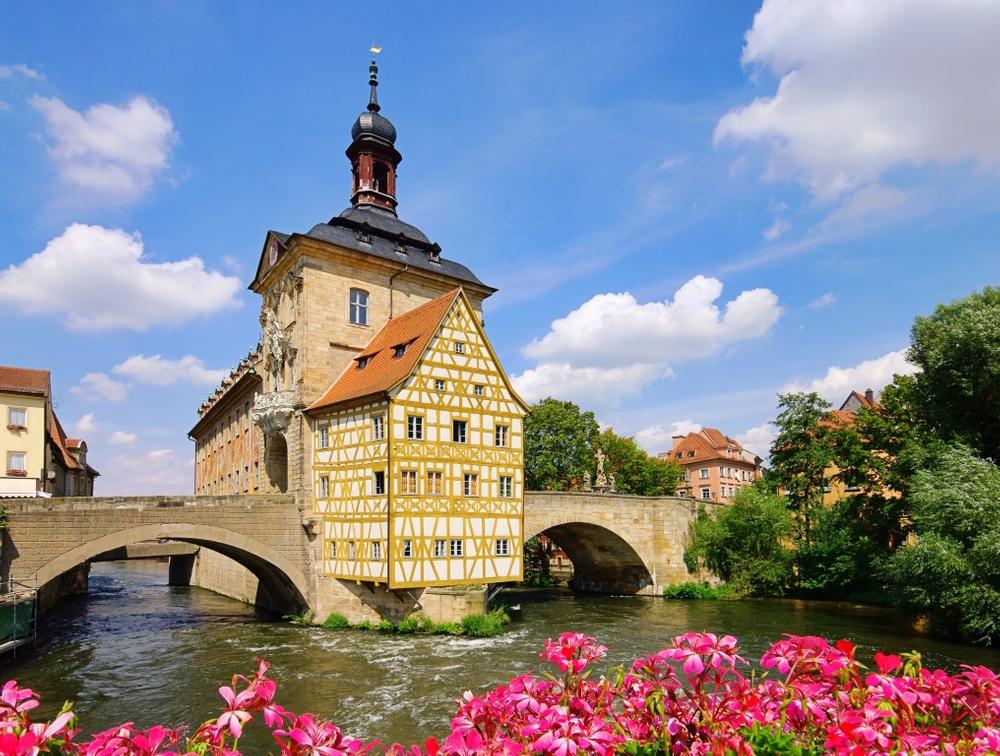
© LianeM/stock.adobe.com
Legend has it that the bishop of Bamberg refused to allocate land for the residents to build a town hall so they drove stakes into the Regnitz river to create an artificial island and erected the building there. When it was built in the 14th century, the architectural style was Gothic.
Changes in the 1700s added Baroque and Rococo touches. Large frescoes adorn some of the multi-story walls, with elements of 3D sculptures protruding from them. The Old Town Hall (Altes Rathaus) is accessible by two pedestrian bridges, one from each river bank. The Ludwig collection is housed there.
The Old Town Hall (Altes Rathaus)
, Obere Brücke, 96047 Bamberg, Phone: +49-95-12-97-62-00
2. Visit the Majestic Cathedral of St. Peter and St. George
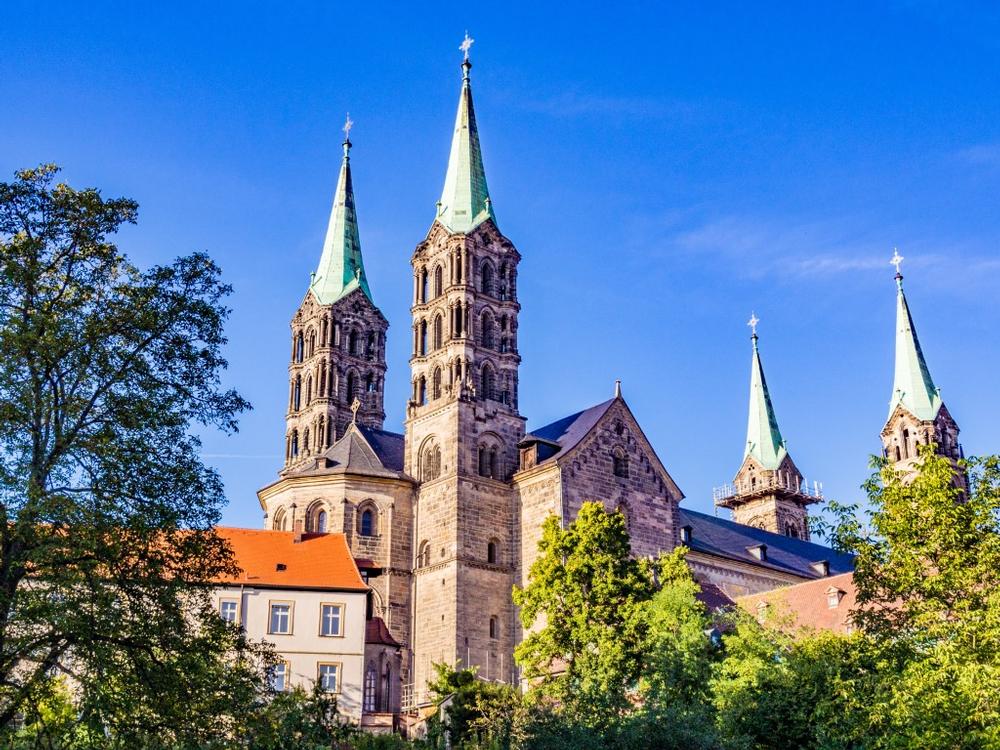
© Takashi Images/stock.adobe.com
The Cathedral land was consecrated in 1012 but the current structure was built in the mid 13th century, after the first two cathedrals burnt down. The Romanesque and Gothic styles reflect the length of time it took to rebuild the cathedral.
It is still a Roman Catholic Church and the seat of the Bishop of Bamberg. The Cathedral of St Peter and St George is named after St George, representing the Holy Roman Empire, and St Peter, representing the Pope. The tombs of Heinrich II and his Empress, Kunigunde, are beautifully carved. The Bamberg Horseman statue is also in the cathedral. The Diocesan museum and shop are on the premises.
Cathedral of St Peter and St George, Domplatz 2, 96049 Bamberg, Phone: 09-5-15-02-25-12
Attractions for Couples
3. Explore Regal Rooms at The New Residence
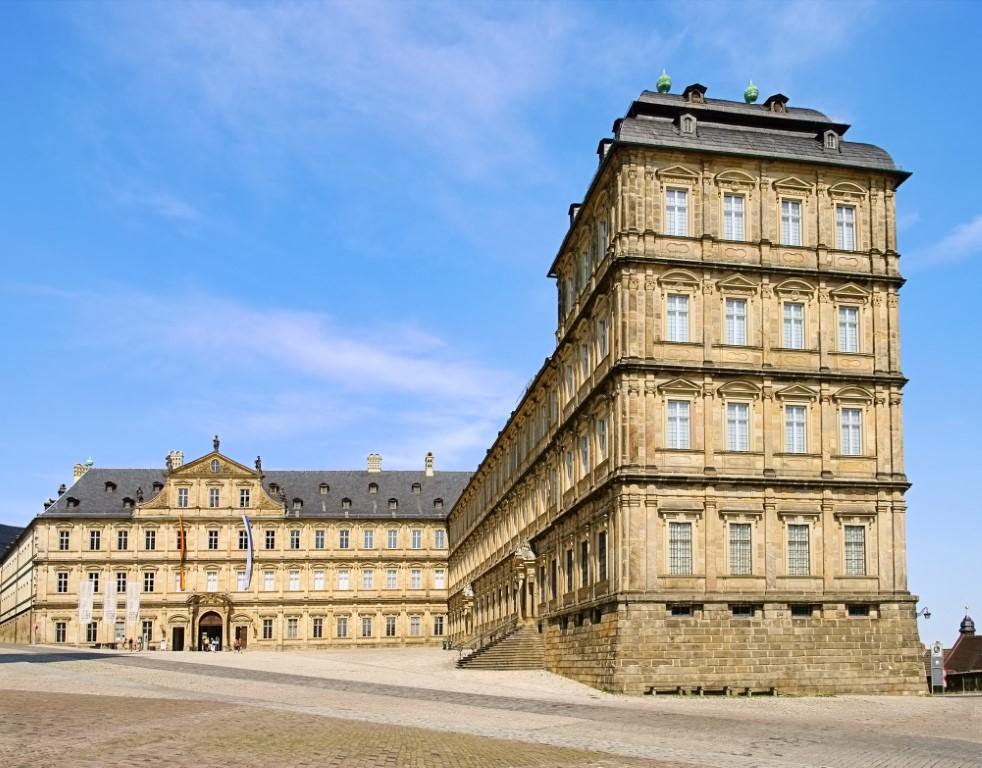
© LianeM/stock.adobe.com
The New Residence of the prince bishops of Bamberg was completed in two stages. The initial structure was completed in 1604 and two additional Renaissance-style wings were added, circa 1700. There are more than 40 state rooms and the interior is decorated with frescoes and chandeliers.
Furniture and fittings date back to the 16th and 17th centuries. The Emperor Hall is home to 16 larger-than-life portraits of emperors through the ages. It is situated on the cathedral square and houses the state library and the state gallery. It is open all year but times change with the seasons. Guided tours operate throughout the day.
The New Residence, Domplatz 8, 96049 Bamberg, Phone: 09-51-51-93-90
4. Dine with a View at Schloss Seehof Restaurant & Cafe
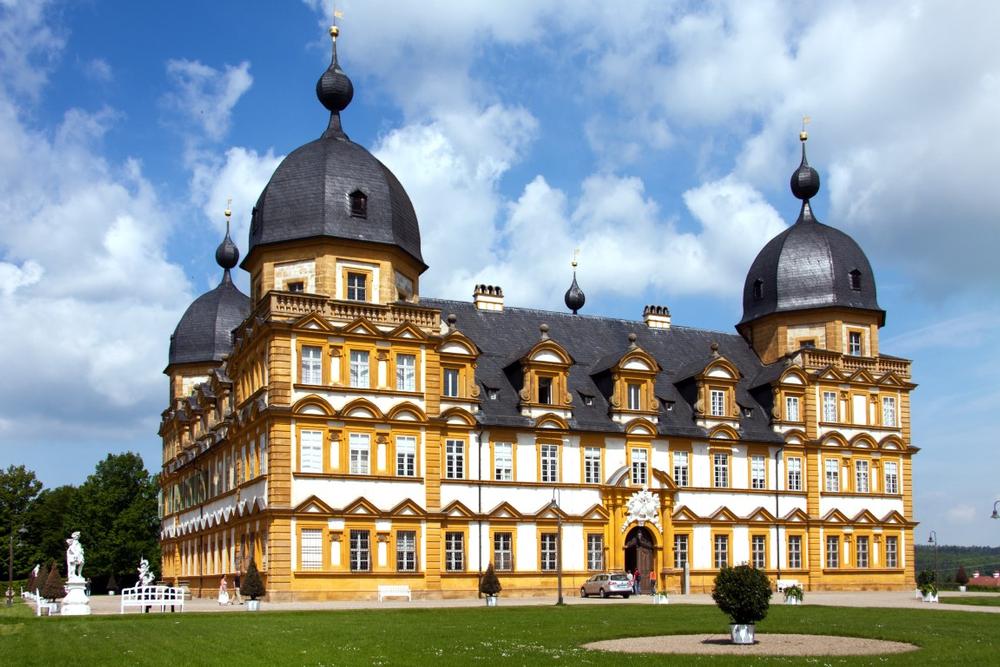
© Edler von Rabenstein/stock.adobe.com
The Schloss Seehof was built in the late 1600 as the summer residence of the prince bishops of Bamberg. The cascading water feature in the castle grounds incorporates several Romanesque statues. The castle park is 21 ha which includes an orange plantation. The Schloss Seehof Restaurant Cafe uses the fruit to make marmalade.
The orangerie was used to help young plants through the winter and is now available for hire for private functions. German cuisine is the order of the day. Groups need to book ahead and are served a set menu. The restaurant is closed on Mondays and between Christmas and mid-January.
Schloss Seehof Restaurant Cafe, Schloss Seehof 14, 96117 Memmelsdorf, Bavaria, Phone: +49-95-14-07-16-40
5. Hike Up to Historic Altenburg Castle
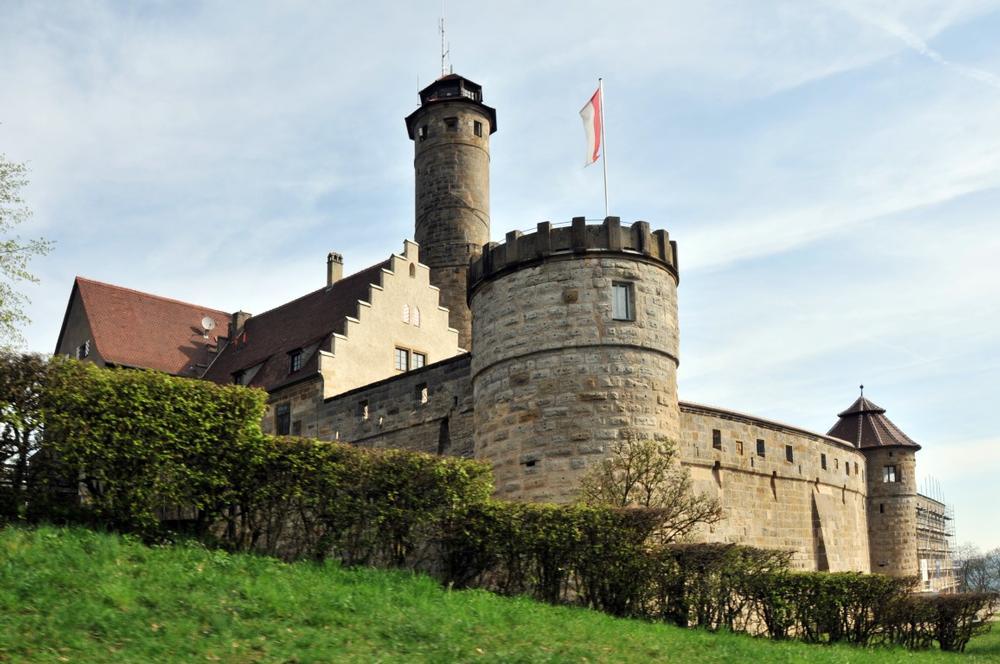
© fotovarvara/stock.adobe.com
On the highest of Bamberg's seven hills, sits Altenburg Castle. It was built before 1109 as a place of refuge for townsfolk if danger threatened. It was used as the residence for Bamberg's bishops from 1305 to 1553, when it was burnt down during a war. It remained derelict until 1801 when a local physician bought it and set about restoring it. In 1818, it was handed to the Altenburg Society, the current custodian. The castle is open for tours and visitors can climb the tower. There is a restaurant on the premises and the Knights' Hall is available for hire for private functions.
AltenburgPhone: 0-95-15-68-28
For Brewery Enthusiasts
6. Taste Tradition at Schlenkerla - the Famous Smoked Beer Brewery
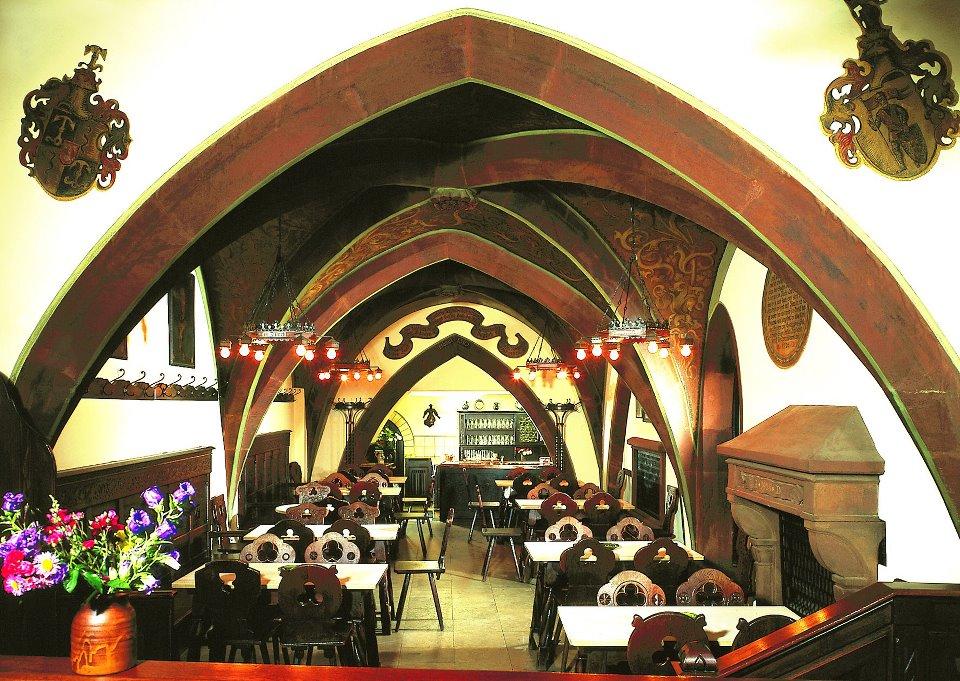
© Schlenkerla – Smoked Beer Brewery
The brewery predates 1405 when it was first mentioned by name as the 'House of the Blue Lion'. Through the centuries, coopers and brewers have occupied the premises. Barrels and beer are often found together. Since 1866, the business has been in the Trum family. Currently, the sixth generation is in charge. The beer at Schlenkerla - Smoked Beer Brewery is made according tradition, begun when long winters necessitated drying the grains for the beers over an open fire. The brewery is open year round but the beer garden is open from Easter to October only, weather permitting. Brunch and hot meals are served and there is a shop selling beer and memorabilia.
Schlenkerla - Smoked Beer Brewery, Dominikanerstraße 6 - 96049 Bamberg, Phone: +49-95-15-60-60
7. Discover Brewing Heritage at the Franconian Brewery Museum
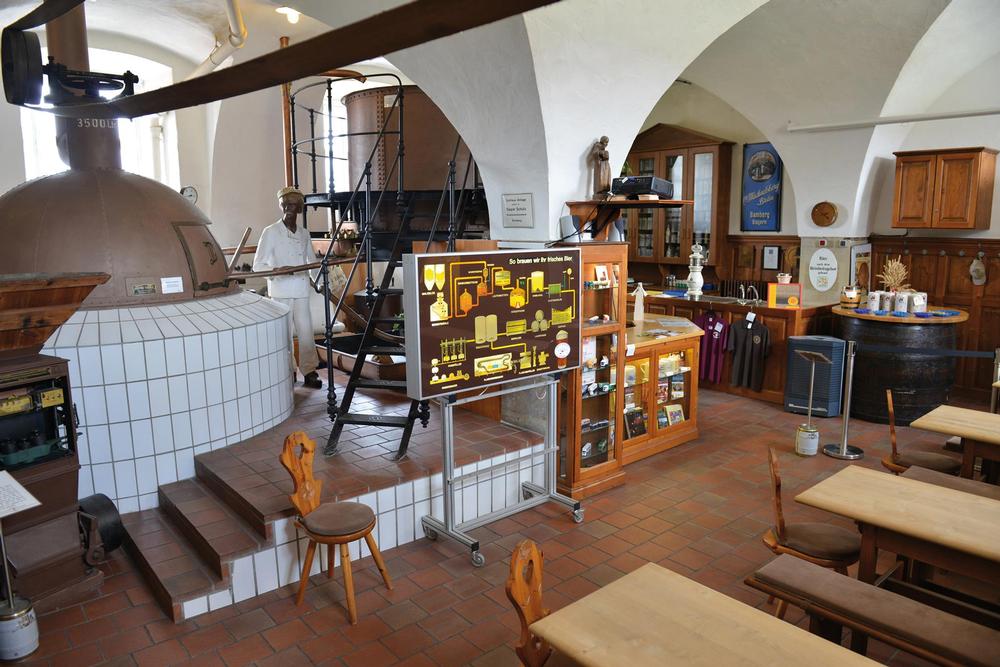
© Franconian Brewery Museum
The Franconian Brewery Museum is situated in the vaults of the former Benedictine monastery brewery which was first mentioned in 1122. It was established in 1979 and seeks to preserve and promote the beer culture of the region. There are 1850 exhibits over five levels. The entire beer making process is explained from sourcing ingredients to bottling and drinking it. Among the exhibits is an extensive collection of beer mugs. Tours, tastings, presentations and seminars are conducted on the premises. There are regular events and outings for members. The museum is open from April to October but closed on Mondays and Tuesdays.
Franconian Brewery Museum, Michaelsberg 10f, 96049 Bamberg, Phone: +49-95-15-30-16
Recommended Activities for Families
8. Stroll the Canals of Bamberg's Little Venice
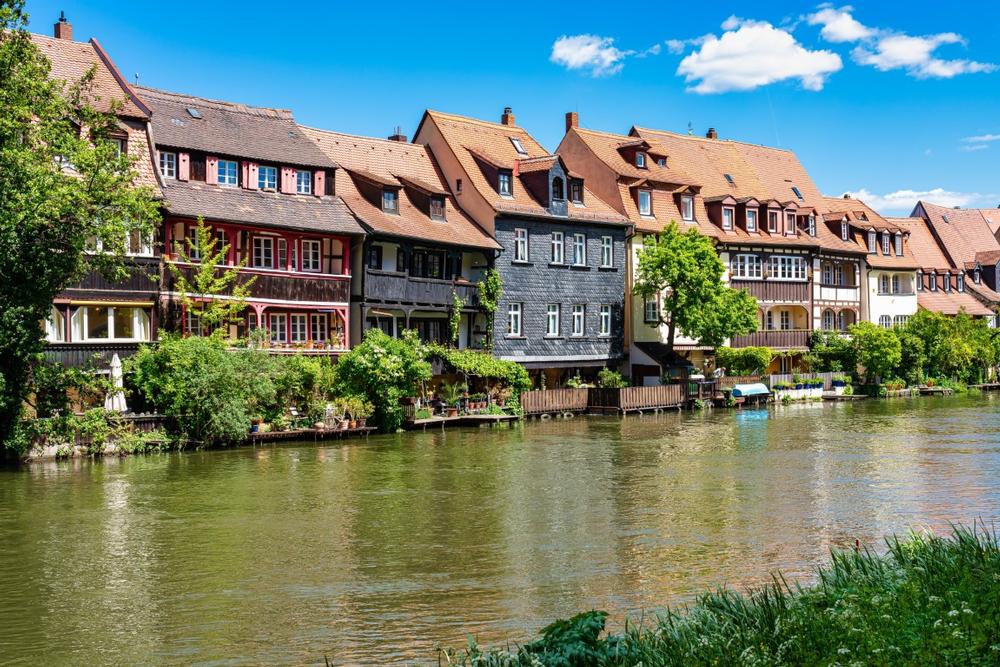
© rudiernst/stock.adobe.com
The consensus among visitors seems to be that this row of fishermen's cottages on the east bank of the Regnitz River does not look like Venice. The half-timber houses, built in the 15th and 16th centuries are all different and distinctly German. They are cantilevered over the river bank and are accessible by boat. The illusion continues however with gondolas-for-hire floating by at Little Venice, a good vantage point from which to view the houses. In spring and summer the balcony gardens blossom and swans, geese and ducks swim in the river, adding to the photogenic scene. There are apartments for hire within the houses.
Little Venice, Klein Venedig, Am Leinritt, 96047 Bamberg
9. Wander Through the Market Gardeners's District

© whyframeshot/stock.adobe.com
For centuries there has been urban market gardening on the fertile alluvial soil in Bamberg. Famously known as 'onion treaders', the area is renowned for its onion sets and liquorice. Many varieties of vegetables are grown today and sold daily at the market or at the farm gate. A route has been laid out through the district which takes visitors past the cottages, through the allotments and to the museum. A small house and garden have been preserved in the Market Gardeners's District to demonstrate what life and work was like for the market gardeners, without modern conveniences. Since 2013, the Bamberg Heritage Garden has been reintroducing local vegetable varieties from heirloom seeds.
Gundelsheimer Str. 51, 96052 Bamberg
10. Step Back in Time at the Old Courtyard
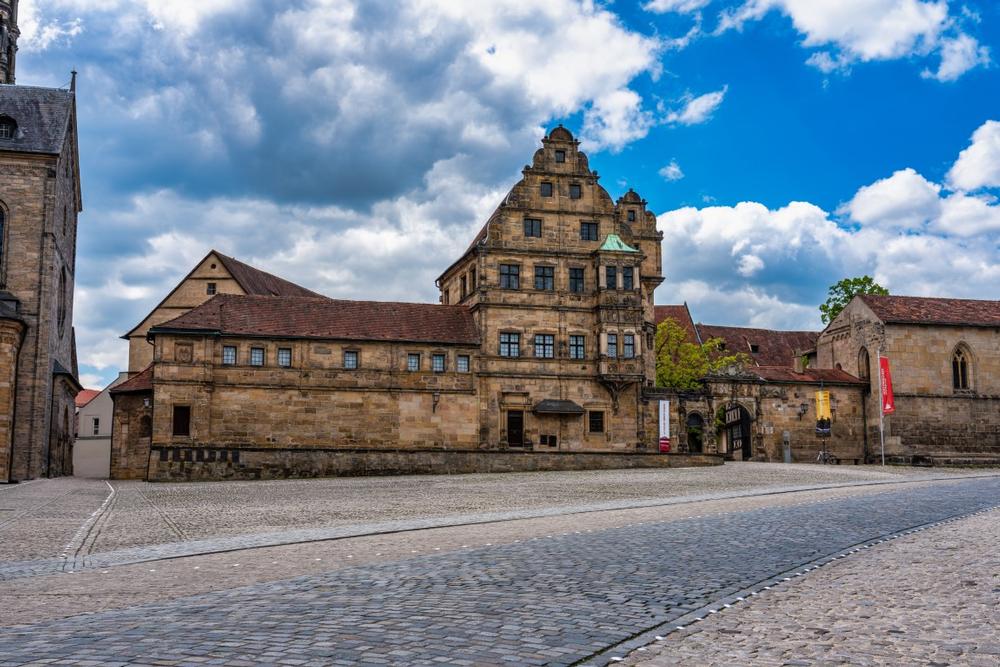
© rudiernst/stock.adobe.com
The Old Courtyard
was the 'old' residence of the bishops of Bamberg. Buildings have been on the site since the 11th century. The current Renaissance-style structure is the third on the site and was erected in the 15th century, alongside the cathedral. The chapel and the palas are still evident. There are picturesque dwellings in the Old Courtyard which are festooned with flowers blooming on their balconies in season. The historical Bamberg museum is in the complex. The history of the Jewish people in Bamberg is told there. There are other hands-on programs in the museum and events such as birthday parties are catered for.
Alte Hofhaltung, Domplatz 96049 Bamberg, Phone: +49-9-51-87-11-42
Must-see if you are a first-time visitor:
- Bamberg Cathedral (Dom) – A Romanesque masterpiece with impressive towers, tombs, and sculptures like the Bamberg Horseman.
- Klein Venedig (Little Venice) – Stroll along picturesque canals lined with colorful half-timbered houses.
- Neue Residenz & Rose Garden – Tour ornate palace rooms and enjoy panoramic views from a beautifully manicured garden.
Where I Like to Eat
- Schlenkerla – Historic brewery tavern serving famous Rauchbier (smoked beer) and hearty Franconian dishes.
- Eckerts Wirtshaus – Modern German cuisine with riverside views and regional ingredients.
- Café Zuckerl – Cozy café known for fresh pastries, breakfast, and coffee in the heart of Old Town.
My favorite local events:
- Sandkerwa Festival (August) – Bamberg’s biggest folk fest with beer tents, music, food, and river races.
- Bamberg Christmas Market (December) – Festive stalls, mulled wine, and local crafts in the historic city center.
- Jazz & Blues Festival (July–August) – Free outdoor performances throughout Bamberg's squares and parks.
My favorite day trips within 30 Minutes of Bamberg, Germany:
- Forchheim (25–30 min) – Explore medieval towers, a charming Old Town, and Kellerwald beer gardens.
- Vierzehnheiligen (30 min) – Baroque pilgrimage basilica surrounded by rolling countryside.
- Banz Abbey (Kloster Banz) (30 min) – Hilltop monastery offering stunning views and historic architecture.
- Staffelberg (30 min) – Hike a scenic plateau with panoramic views, ancient ruins, and a rustic inn at the top.
- Hirschaid (20 min) – A quieter Franconian village with breweries and access to bike trails.
- Litzendorf (20–25 min) – Home to the Franconian Switzerland sculpture trail and countryside charm.
Plan Your Trip


